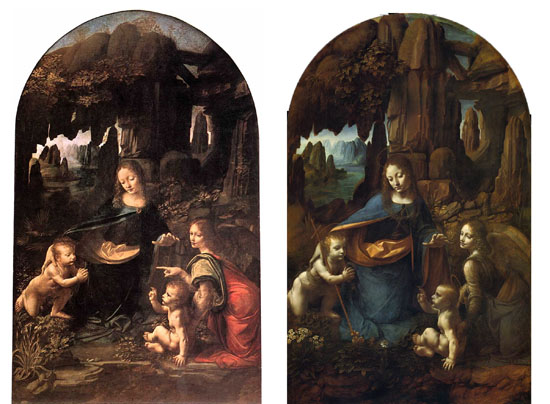The billboards have gone up. You might have seen them on I-30 or Mockingbird. Large looming images of Poetry, the somewhat androgynous figure in the blue rag headdress, advertise the exhibition of Salvator Rosa’s17th century paintings, Salvator Rosa: Bandits, Wilderness, and Magic. The image is striking: wild hair, aquiline nose, pursed rosy lips, piercing eyes set strangely far apart. Its partner in the exhibition is Philosophy, clearly a man. The figure of Philosophy sports a floppy hat, long hair, and slight evidence of a beard. Falling out of the left corner of the picture frame he holds a Latin signboard stating the virtues of silence.
These two paintings are among the first that greet you upon entering the Salvator Rosa show at the Kimbell Art Museum. Following these allegorical portraits come rooms with savage landscapes with tiny figures in various dress, witches in various states of practice, and other narrative paintings with figures from the ancients.

My favorite painting, and the one most unlike the others, is Death of Empedocles. The brush strokes are looser, the sky less ideal, the edges of objects less defined. While many of the paintings in the exhibition address themes of wilderness, they do it with a tightly measured, nearly invisible brushstroke. In Empedocles, the human figure morphs into a mass of light and dark and brush strokes and into the craggy cliffs themselves. The brush strokes are the emotion, the idea, the surface. They are the evidence of something larger, more connected.
The picture shows a man becoming one with the landscape. Curator Xavier Salomon explains that it tells the story of Empedocles trying to pull a ruse on the people, diving into the volcano to prove his divinity.
It’s hard to read the volcano as a volcano here, but it is clear that it is a leap into an unknown, inhospitable landscape. It is a surrender to the sublime, a release of anything from the man-made world. Yet, in the image, the human figure is buffeted up, nearly flying over an abyss of craggy cliffs as much as he is plunging to death in the volcano of Etna. The chiaroscuro is intense, the mottled surface of the painting is such that sky, mountain, smoke, cloud, fabric robes, and hair are of one. The hands are the one clearly human aspect in the painting, fingers extended overhead as if in praise.

The difference between this painting and the rest reminds me of painter/theorist/psychoanalyst Bracha Ettinger talking about the difference between the two Da Vinci Virgin of the Rocks paintings, one from the Louvre (left), one from the National Gallery in London (right). These weren’t painted by the same person, she argues. She was talking about the way in which the figures merge with the landscape in the Louvre version revealing what she would call a “matrixial” understanding of the world. In the National Gallery version, the figures and landscape retain their discreteness from themselves and each other, a more “phallic” rendering.
As for the billboards all over town, I’m not sure what to think. Do they bring in more people to the museum? Do they open high art culture to larger audience? Do they serve the purpose of reminding those people who might generally like to go see art, but sometimes just forget about it because they are busy and life is full of so many other demands? Even though I’ve been skeptical about this trend in Dallas-Fort Worth, I’m coming to appreciate the now familiar figure of Poetry looming large on the billboards overhead amidst the rest of the visual chatter: advertisements for hospitals, hemorrhoid treatments, beer, evangelical messages, and thinly veiled sex shops.
Image at top: Salvator Rosa’ Poetry (left) and Philosophy.
Curator Xavier Salomon speaking on Rosa’s Poetry and Philosophy:




